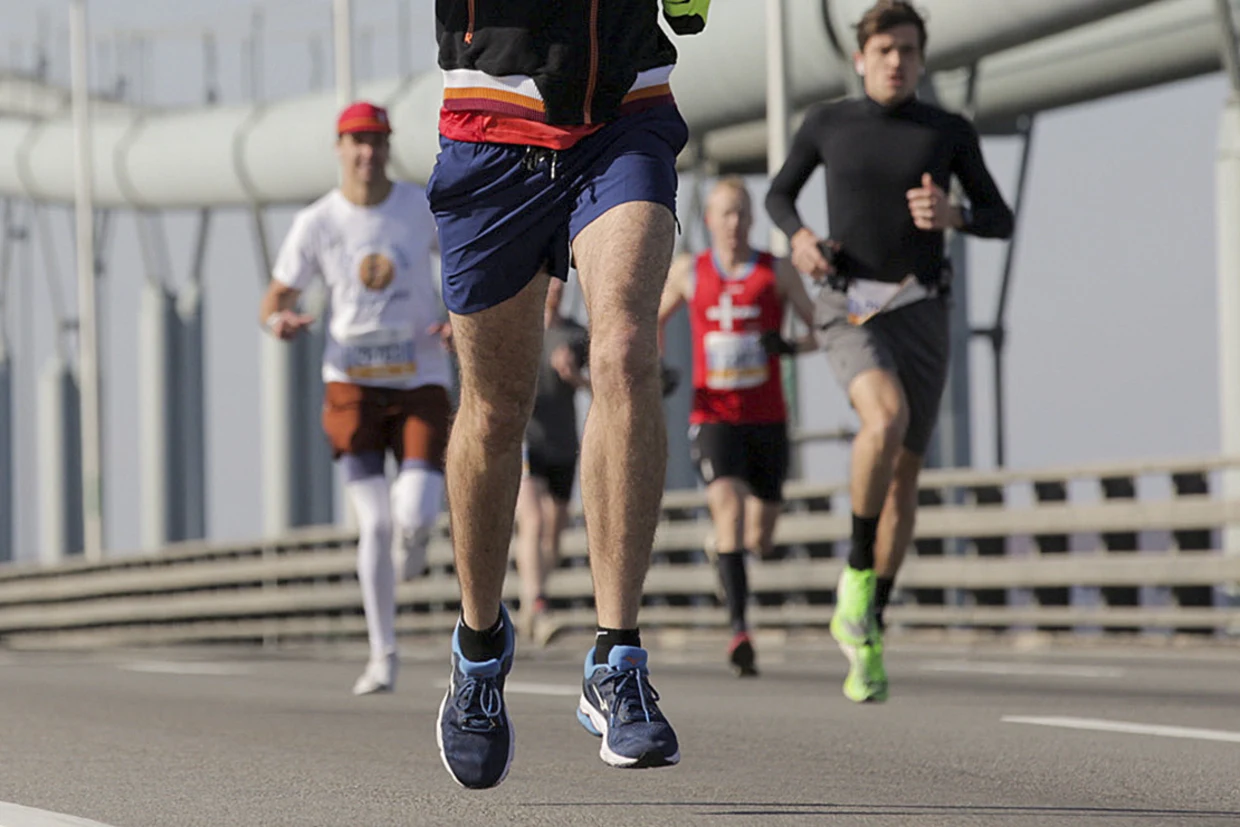For decades, runners have been warned that their hobby would destroy their knees. But emerging research reveals the opposite: running may protect knee health when done responsibly. Let’s explore the science behind this paradigm shift and how genetics influence your knees’ resilience.
The Running-Knee Myth: Why It’s Wrong
Contrary to popular belief, recreational running is not a risk factor for knee osteoarthritis (OA). In fact:
- Recreational runners have 3x lower rates of hip and knee OA than sedentary individuals1.
- Competitive runners show a 4x reduction in OA risk compared to non-runners1.
- Running stimulates cartilage to thicken and adapt, improving joint lubrication and nutrient delivery78.
The myth likely persists because running temporarily increases knee load (~4–8x body weight per step). However, this stress triggers beneficial adaptations: stronger muscles, denser bones, and more resilient cartilage57.
Running vs. Other Exercises
How does running compare to low-impact activities?
| Exercise | Knee Impact | Key Benefits |
|---|---|---|
| Running | High (dynamic) | Strengthens cartilage, boosts bone density, reduces OA risk15 |
| Cycling | Low | Improves joint mobility, minimal cartilage adaptation |
| Swimming | None | Reduces inflammation, ideal for existing OA1 |
| Strength Training | Variable | Enhances muscle support, reduces injury risk5 |
Running uniquely promotes cartilage health through motion-driven synovial fluid production, which nourishes joints7. However, combining running with strength training (e.g., squats, lunges) maximizes knee resilience5.
The Genetic Edge: Why Some Knees Handle Running Better
Genetics account for ~40% of knee OA risk6, influencing:
- Collagen Integrity
- Cartilage Metabolism
- Inherited OA Risk
- A family history of OA may override running’s protective effects in some cases6. Genetic testing could help identify high-risk individuals.
Common Knee Issues in Runners (And How to Fix Them)
Most running-related knee pain stems from biomechanical issues, not OA:
- Iliotibial Band Syndrome (ITBS)
- Symptoms: Pain on the knee’s outer side.
- Fix: Physical therapy, hip/core strengthening, and gait adjustments5.
- Patellofemoral Pain Syndrome (PFPS)
- Symptoms: Front knee pain from misaligned kneecaps.
- Fix: Quad/hamstring strengthening, orthotic inserts5.
Neither condition typically requires surgery. Addressing muscle imbalances early prevents chronic issues5.
Who Should Be Cautious?
Running may worsen symptoms if you have:
- Pre-existing knee OA (due to cartilage loss)1.
- Untreated ligament/meniscus injuries.
- High-risk genetic variants (e.g., IL-1β overexpression, Sp1 polymorphism)24.
Opt for low-impact activities (e.g., swimming) if pain persists during/after runs1.
5 Rules for Knee-Healthy Running
- Build Fitness First: “Get fit to run, don’t run to get fit” – especially after age 501. Start with walking and strength training.
- Progress Gradually: Increase mileage by ≤10% weekly to avoid overloading joints.
- Strengthen Hips/Quads: Target glutes, hamstrings, and core to stabilize knees.
- Mix It Up: Cross-train with cycling or swimming to reduce repetitive stress.
- Listen to Your Body: Persistent pain? Consult a sports physiotherapist.
Key Takeaways
- Running protects knees in most healthy individuals by strengthening cartilage and muscles.
- Genetics determine how well your knees adapt to running stress.
- Biomechanical issues (not OA) cause most running-related knee pain – and they’re fixable.
So lace up those shoes confidently! With smart training and attention to your body, running can keep your knees strong for decades.
References
- Is Running Bad for Your Knees? Research Says “No”
- Genomic Determinants of Knee Joint Biomechanics
- Effects of Running on Knee Osteoarthritis
- Articular Cartilage Changes in Athletes
- Northwestern Medicine: Running and Joint Health
- Genetics of Knee OA
- Oxford Orthopaedics on Running Benefits
- NYT: Running and Cartilage Adaptation
Citations:
- https://longevity.stanford.edu/lifestyle/2023/08/29/is-running-bad-for-your-knees-research-says-no/
- https://pmc.ncbi.nlm.nih.gov/articles/PMC10888373/
- https://pmc.ncbi.nlm.nih.gov/articles/PMC9983113/
- https://pmc.ncbi.nlm.nih.gov/articles/PMC3874229/
- https://www.nm.org/healthbeat/healthy-tips/fitness/is-running-bad-for-your-knees
- https://www.physio-pedia.com/Runners_and_Knee_Osteoarthritis
- https://oxfordortho.sg/articles/why-running-is-actually-good-for-your-knees/
- https://www.nytimes.com/2020/10/21/well/move/why-running-wont-ruin-your-knees.html




